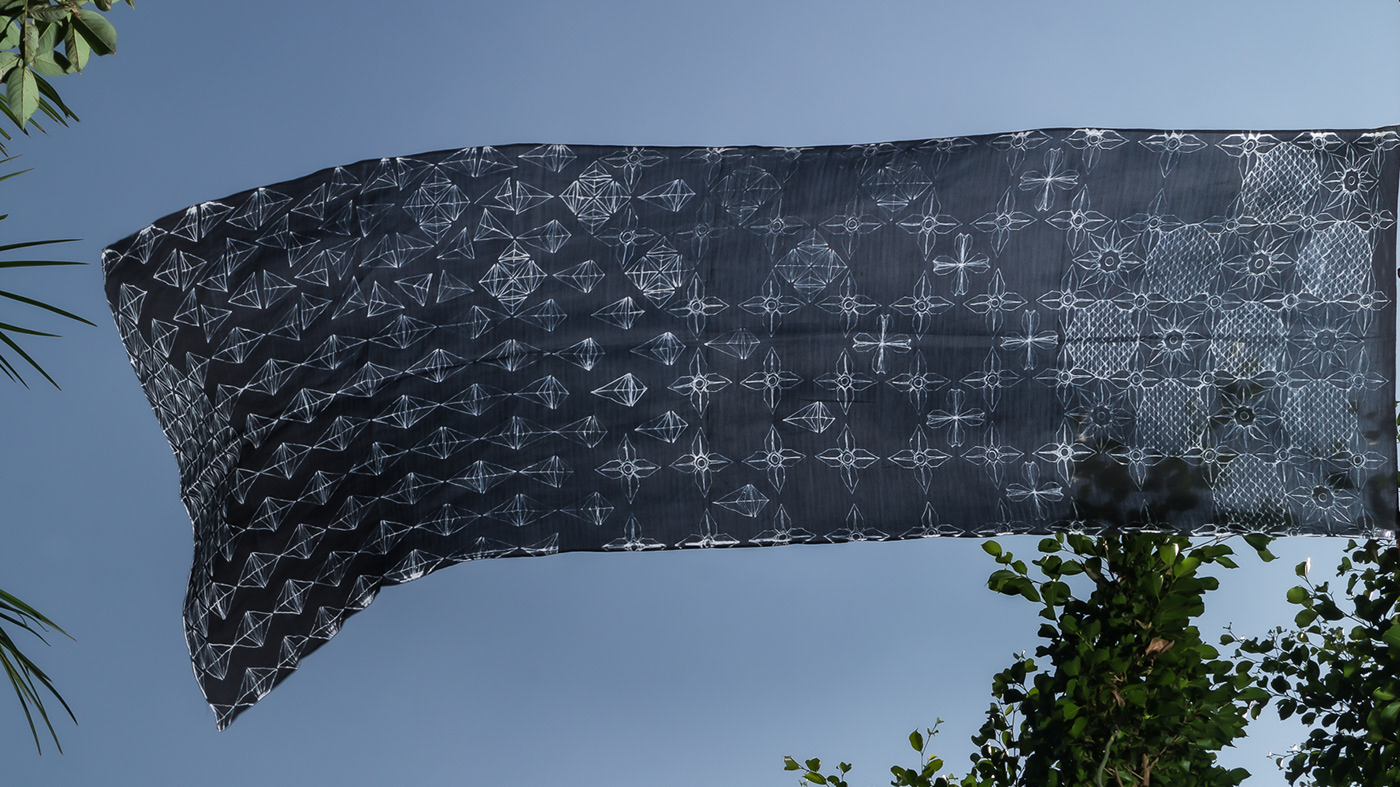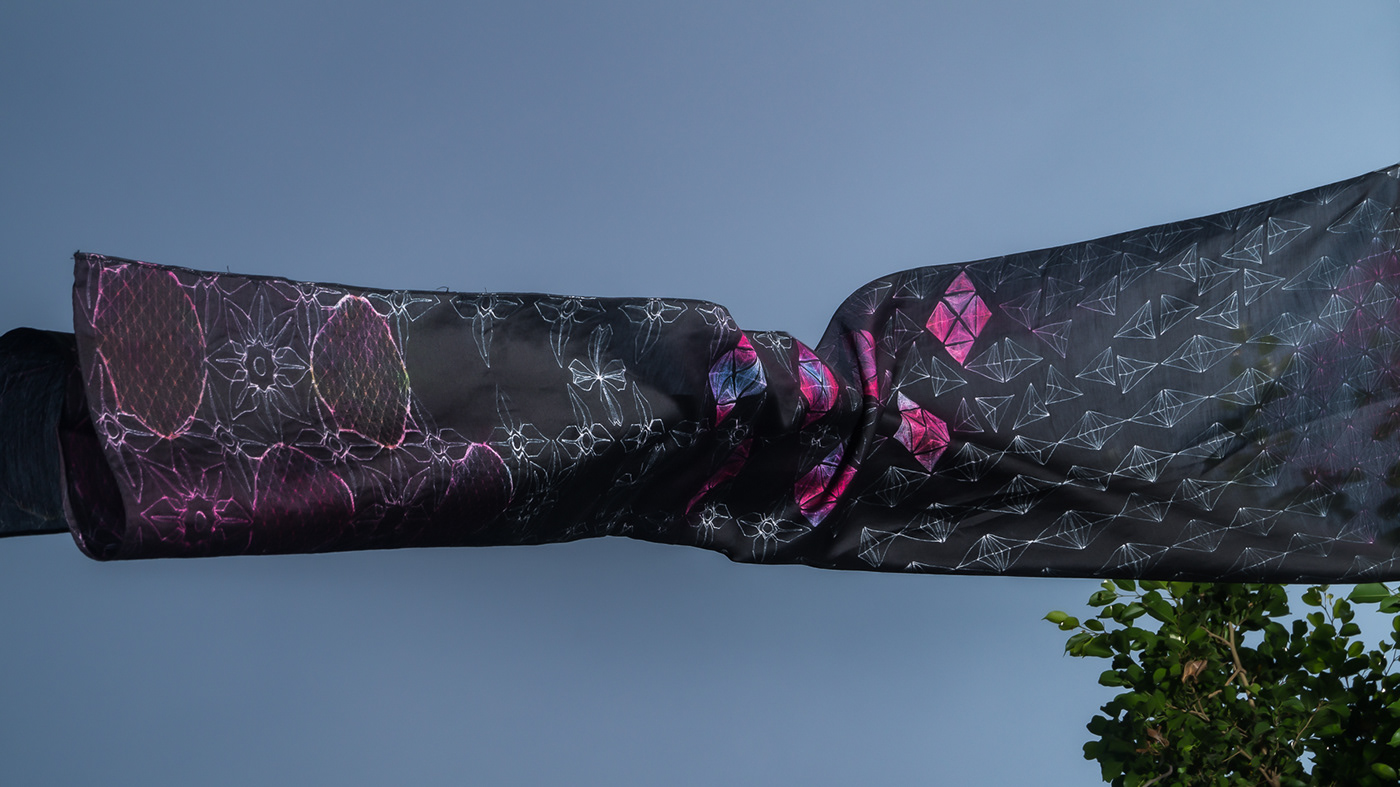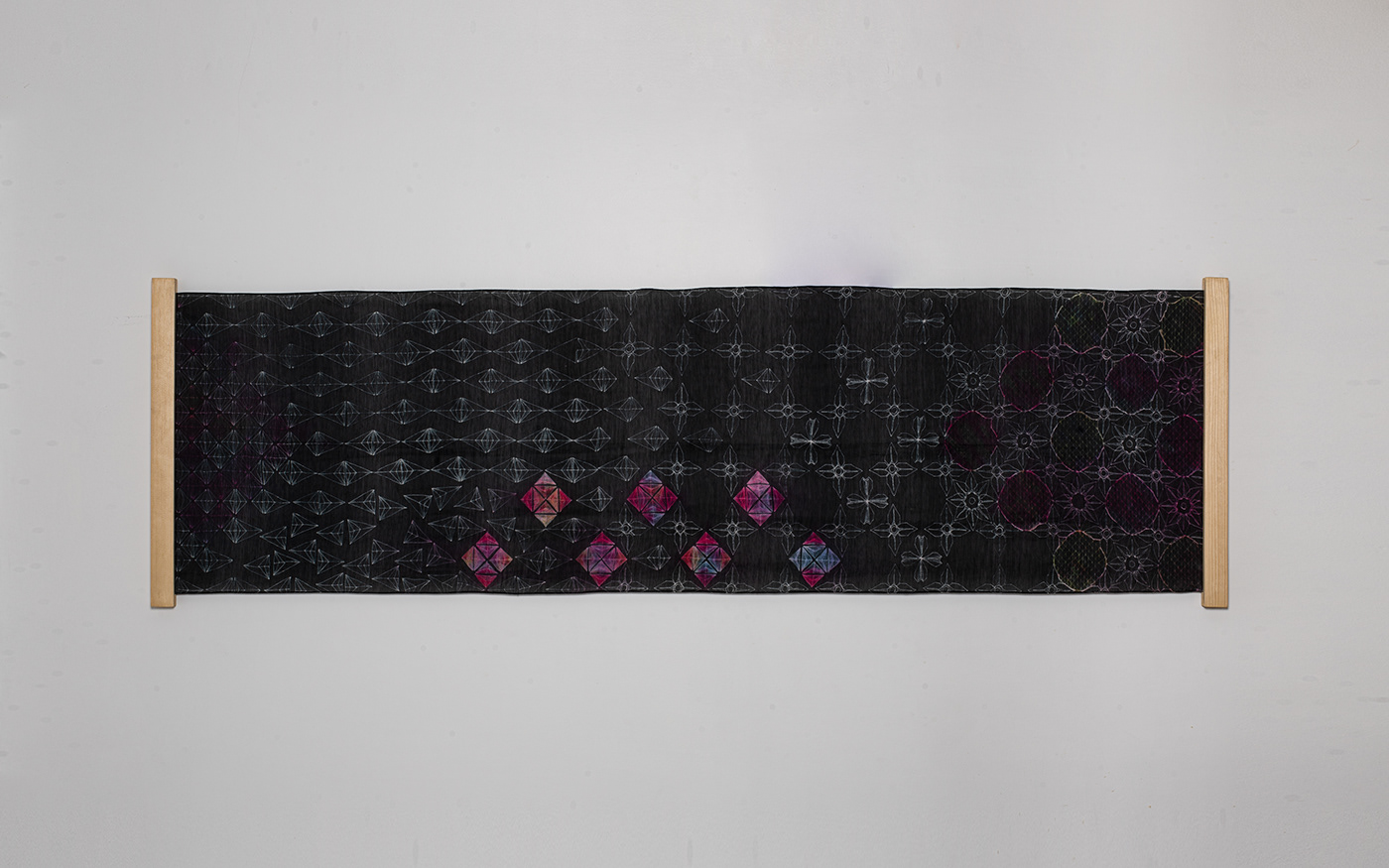TALES
1.1 Four Leaf Clover
Origami Inspired - Resist Dyed textiles
I had always been keen to work on something which reflects my thoughts that I had gathered while wandering around and things that have made me wonder. It's a wholesome of thoughts about the existence of life and how they have changed and evolved us.
This series which is still in its second phase of development is divided into 3 sub themes
This series which is still in its second phase of development is divided into 3 sub themes
TALES | DISCOVERY | SPIRITUALITY.
Each sub theme is then further divided into three phases of interlinked artworks.
Design Language
Motifs and patterns of the above artworks are inspired by origami. When a 2D paper is folded onto a specific line also known as crease pattern it transforms into a 3D form.
Each theme’s 1st phase artworks consist of two halves. The first half motifs are inspired from 3D origami forms and second half motifs are crease patterns of the same form.
The Story
A story which is in existence from an unknown era about the goodluck of finding a four leaf clover which is said to be 1 in 10000. The 1st phase of this theme is simply called the auspicious Four Leaf Clover - in this phase a process of change is shown from a simple repetitive pattern transforming into a pair of four leaf clovers.
DESIGN PROCESS






PATTERN CONCEPT




PATTERN


Story Of the Craft
Craft of resist dyeing according to my perception has been in existence since humans found a way of dyeing textiles, since then many techniques were developed around the world in search of creating something unique. Techniques might have been developed by accidents or trying to control the flow of dyes or simply by resisting it with different materials. This technique of resist dyeing varies in different parts of the world which may be due to following factors - width and weave of textiles, climate conditions, dyeing practises, availability of raw materials, traditional draping of textile, and cultural diversity.
Innovation in Technique
Many alterations were done to the hand operated stitching machine. After consistent efforts this manual machine was able to stitch many layers of folded textile in any shape. The same tedious method was then applied to motor driven stitching machine.
Dyeing became a blind spot for dyers as no one could know what and how much color would spread across the layers. Post several experiments we were finally able to measure the quantity of dyes in accordance with fabric and the time that it should be kept in the dyeing bath.
Dyeing became a blind spot for dyers as no one could know what and how much color would spread across the layers. Post several experiments we were finally able to measure the quantity of dyes in accordance with fabric and the time that it should be kept in the dyeing bath.
Unthreading of stitches was also a major task to be achieved as different kinds of threads were used to ease the process of opening.
PROCESS



FABRIC PANEL



MONOCHROME



MULTI - DYEING














